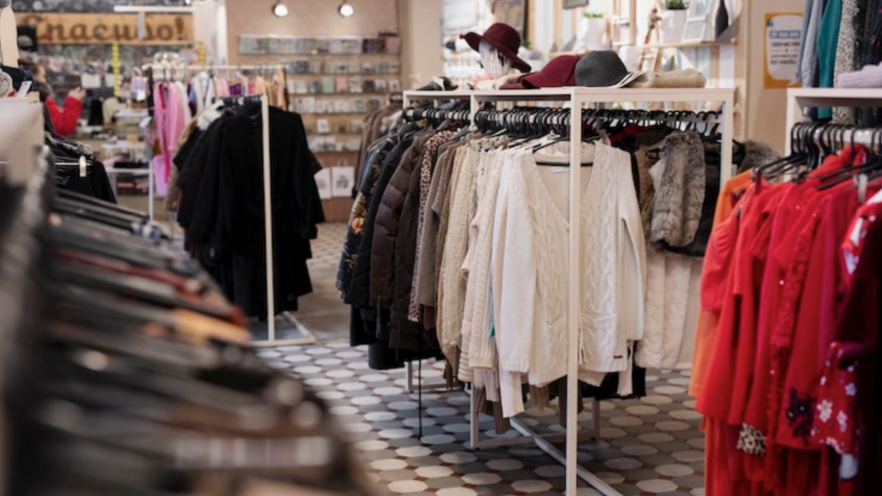 In the realm of fashion sustainability, a seismic shift is underway as major players like Ralph Lauren and Brunello Cucinelli recalibrate their climate commitments. Are these adjustments a sign of fashion quietly abandoning its climate goals? Dive into the nuanced landscape of corporate climate action with insights on industry giants like Asos and Vestiaire Collective. Unpack the complexities of net-zero targets, the scrutiny on carbon credits, and the evolving narrative of environmental responsibility in the fashion world. Join us on a journey through the intricate tapestry of sustainability in the global fashion supply chain.
In the realm of fashion sustainability, a seismic shift is underway as major players like Ralph Lauren and Brunello Cucinelli recalibrate their climate commitments. Are these adjustments a sign of fashion quietly abandoning its climate goals? Dive into the nuanced landscape of corporate climate action with insights on industry giants like Asos and Vestiaire Collective. Unpack the complexities of net-zero targets, the scrutiny on carbon credits, and the evolving narrative of environmental responsibility in the fashion world. Join us on a journey through the intricate tapestry of sustainability in the global fashion supply chain.
The Evolving Landscape of Fashion Sustainability
The fashion industry is witnessing a significant shift in its approach to sustainability, with key players like Ralph Lauren and Brunello Cucinelli recalibrating their climate commitments. The decision by Ralph Lauren to abandon its long-term net-zero emissions target in favor of shorter-term milestones reflects a broader trend of companies reassessing the effectiveness and feasibility of ambitious sustainability goals. Similarly, Brunello Cucinelli's response to short-seller allegations highlights the scrutiny faced by fashion brands in maintaining transparency and integrity in their operations. These developments underscore the complex challenges faced by companies in aligning environmental goals with business strategies while navigating external pressures and market dynamics.
Reassessing Net-Zero Commitments: A Strategic Shift in Climate Targets
The recent reset of net-zero commitments by Asos and Crocs sheds light on the evolving narrative surrounding corporate climate action. As companies reevaluate the robustness of their initial targets, the focus has shifted towards setting achievable and impactful goals that drive tangible emissions reductions. The recalibration of sustainability strategies by industry giants like Under Armour reflects a broader trend of companies recognizing the need for more realistic and actionable climate initiatives. These adjustments signal a strategic shift towards prioritizing measurable progress over lofty, yet potentially unattainable, long-term objectives.
Navigating the Controversy of Carbon Credits in Fashion
The decision by Vestiaire Collective to venture into the realm of carbon credits signifies a renewed interest in leveraging innovative solutions to mitigate environmental impact within the fashion supply chain. By introducing a carbon credit scheme based on the avoidance of emissions through secondhand clothing sales, Vestiaire Collective aims to demonstrate the potential of circular business models in reducing carbon footprints. However, the controversy surrounding carbon markets, characterized by skepticism and criticism, poses challenges in establishing credibility and transparency in environmental claims. The initiative underscores the delicate balance between leveraging market mechanisms for sustainability and addressing concerns over the effectiveness and integrity of carbon offsetting practices.
Strengthening Accountability and Transparency in Sustainability Reporting
Amidst the shifting landscape of corporate climate action, the role of organizations like the Carbon Trust becomes increasingly crucial in promoting accountability and transparency in sustainability reporting. As companies face mounting pressure to demonstrate genuine progress towards environmental goals, independent verification and validation of emissions reductions play a vital role in ensuring the credibility of sustainability initiatives. The scrutiny faced by brands like Louis Vuitton in combating counterfeit goods highlights the broader imperative for ethical sourcing practices and responsible business conduct. By upholding rigorous standards and promoting best practices, organizations like the Carbon Trust contribute to fostering a culture of transparency and integrity within the global supply chain.
Embracing Complexity and Innovation in Sustainable Fashion Practices
The intersection of environmental responsibility, business strategy, and consumer preferences underscores the multifaceted nature of sustainable fashion practices. As companies navigate the complexities of climate commitments, ethical sourcing, and transparency, strategic partnerships and innovative initiatives emerge as key drivers of progress. The dynamic landscape of sustainability in the fashion industry necessitates a holistic approach that integrates environmental stewardship with operational efficiency and stakeholder engagement. By embracing complexity and fostering a culture of innovation, companies like Reformation and Louis Vuitton can position themselves as leaders in sustainable fashion, driving positive change across the global supply chain.
Conclusion
The intricate tapestry of sustainability in the global fashion supply chain reveals a landscape in flux, where industry giants like Ralph Lauren and Brunello Cucinelli recalibrate their climate commitments amid a nuanced dance of evolving narratives and strategic shifts. As Asos, Under Armour, and Crocs reassess net-zero targets and Vestiaire Collective ventures into carbon credits, the industry grapples with the delicate balance of ambition and achievability. Upholding accountability and transparency through organizations like the Carbon Trust becomes paramount, fostering a culture of integrity. Embracing complexity and innovation, companies like Reformation and Louis Vuitton pioneer sustainable practices, driving positive change and setting the stage for a future where sustainability and profitability converge harmoniously.